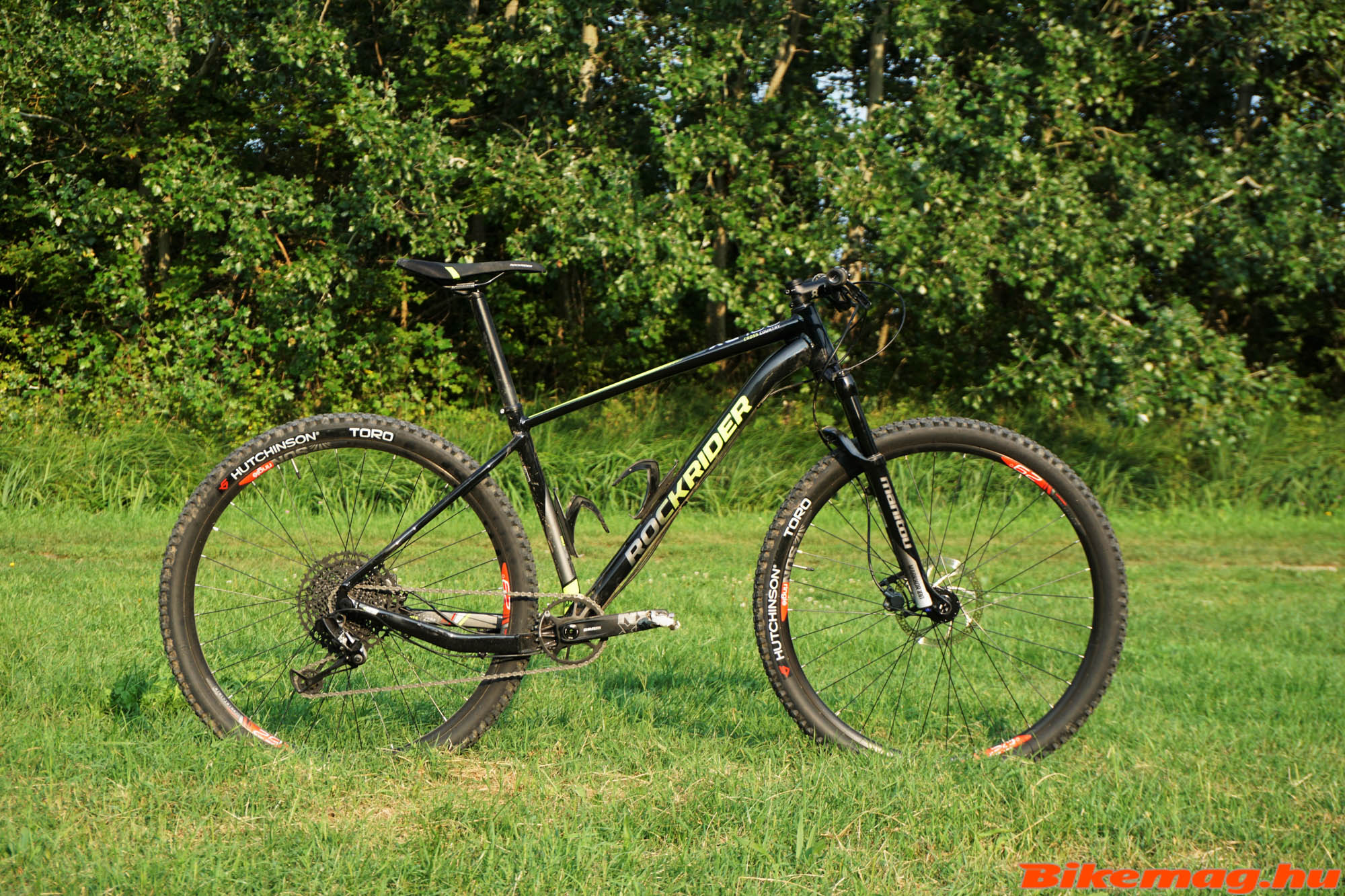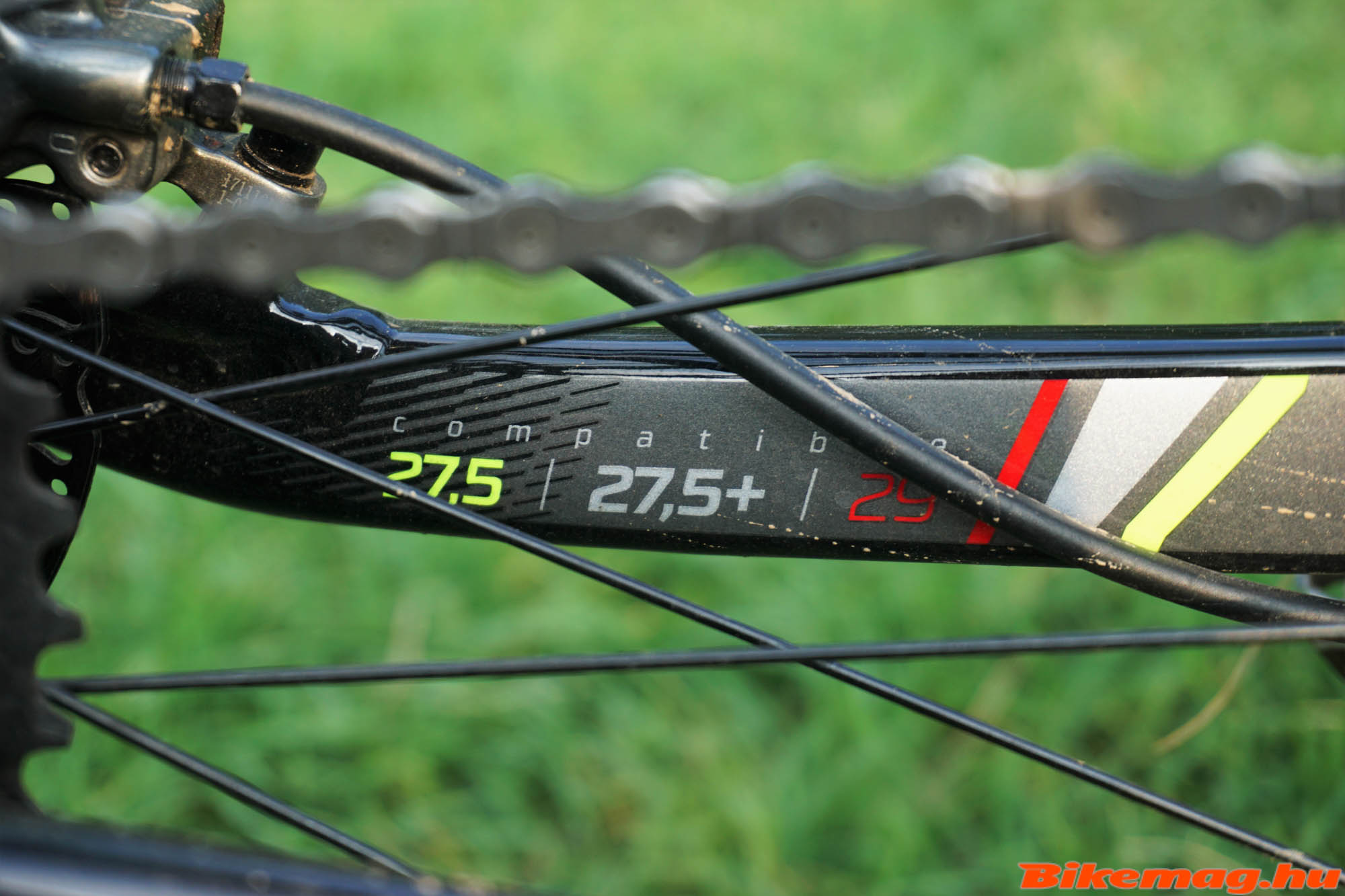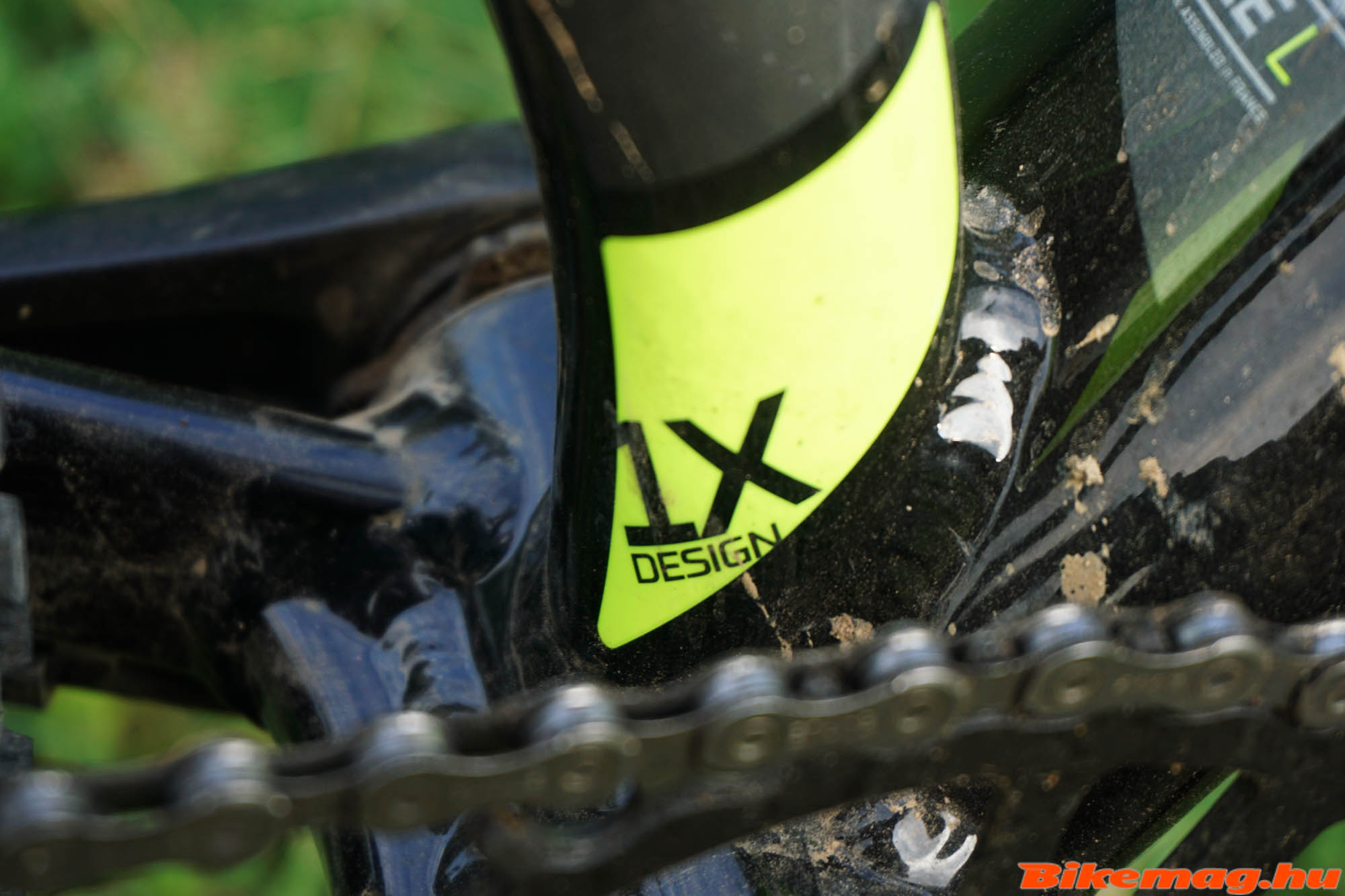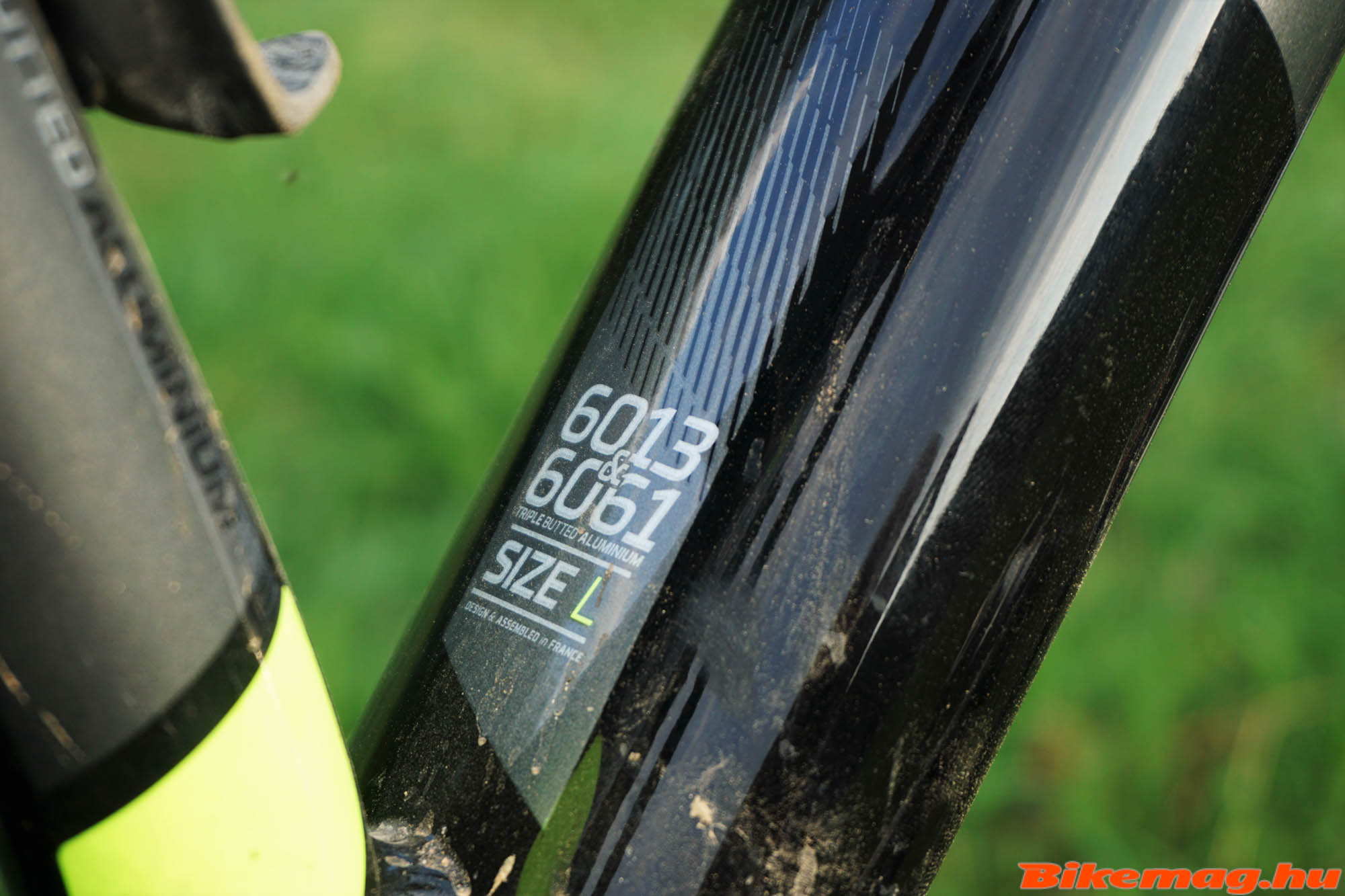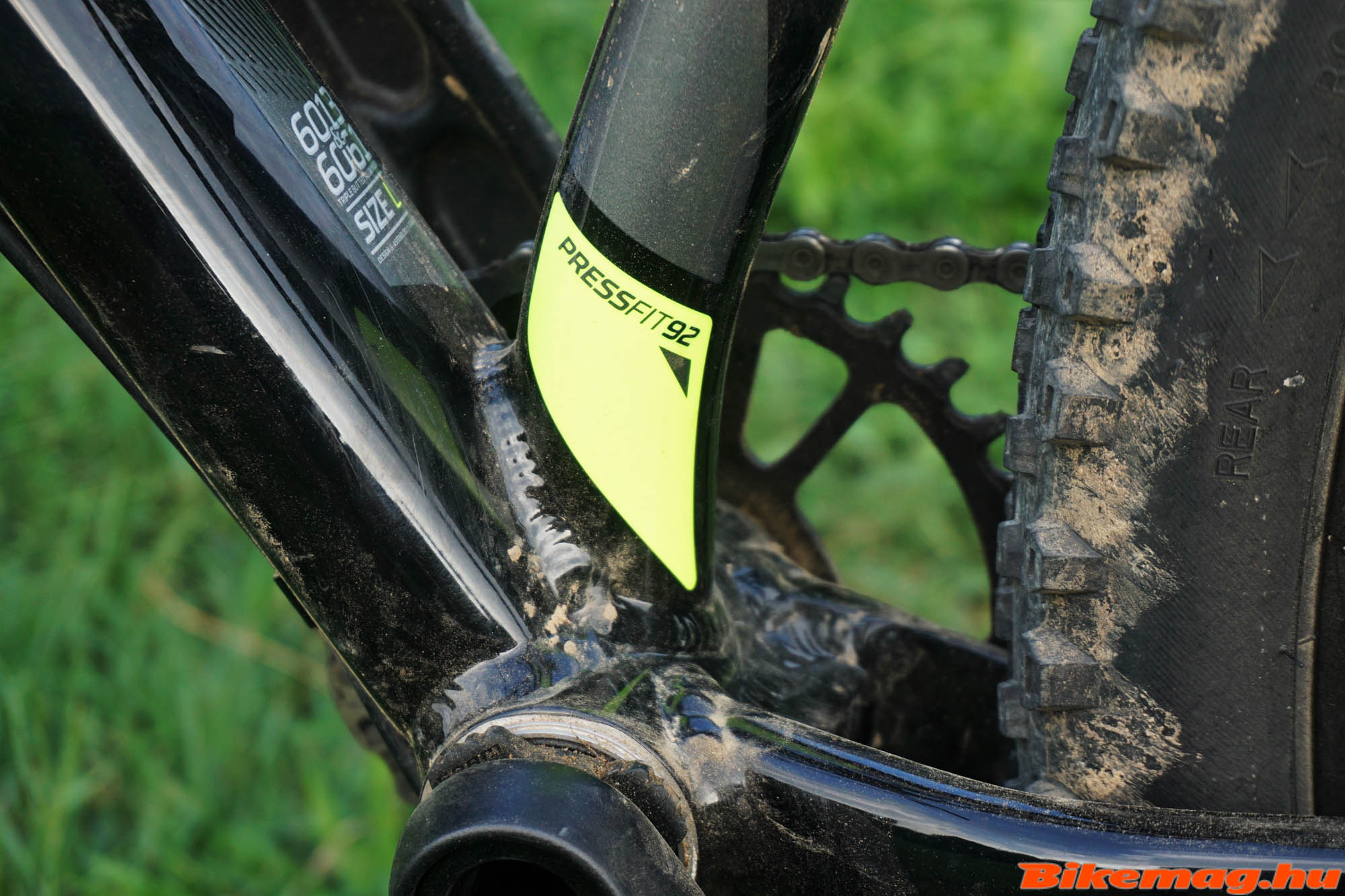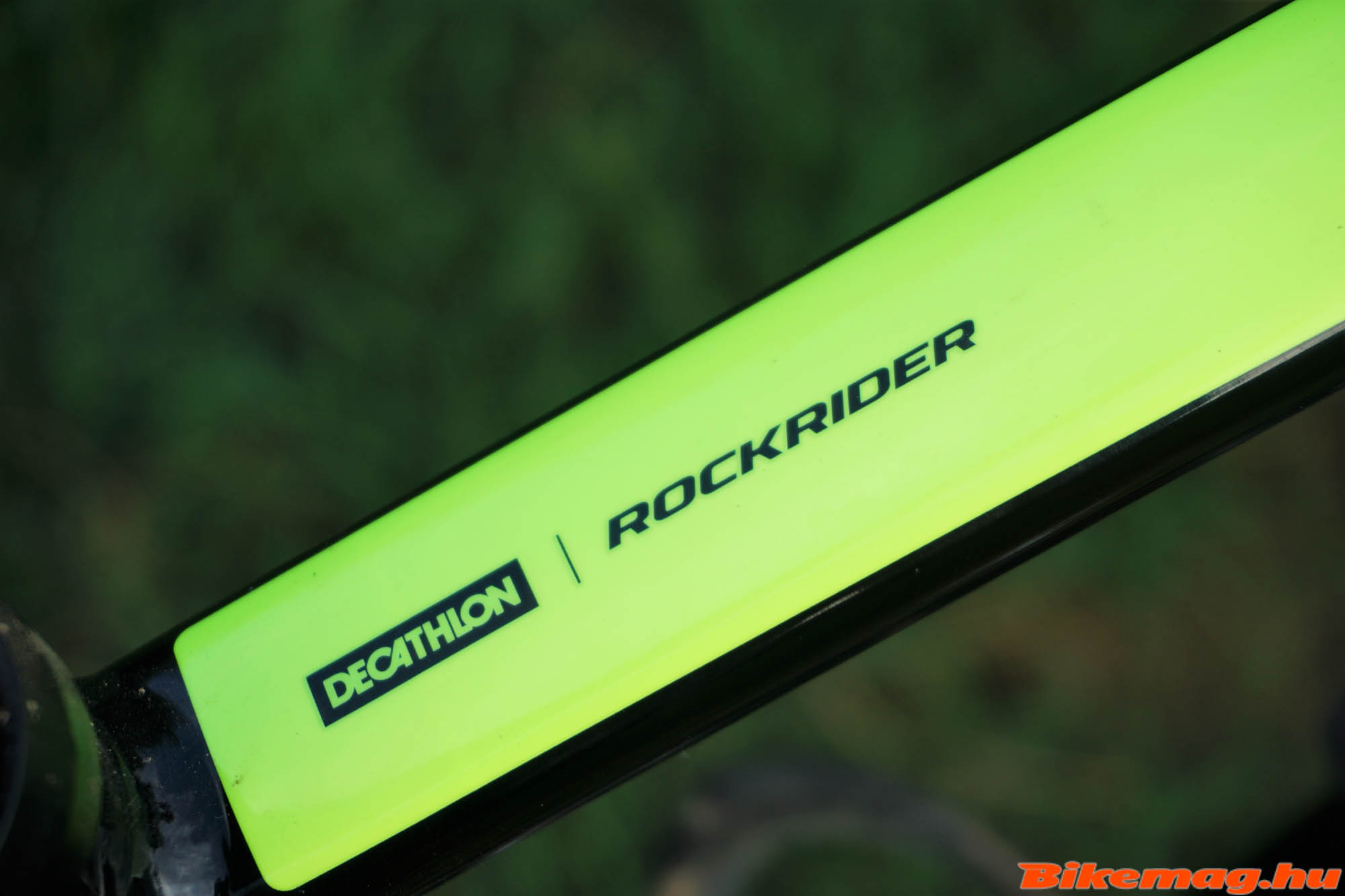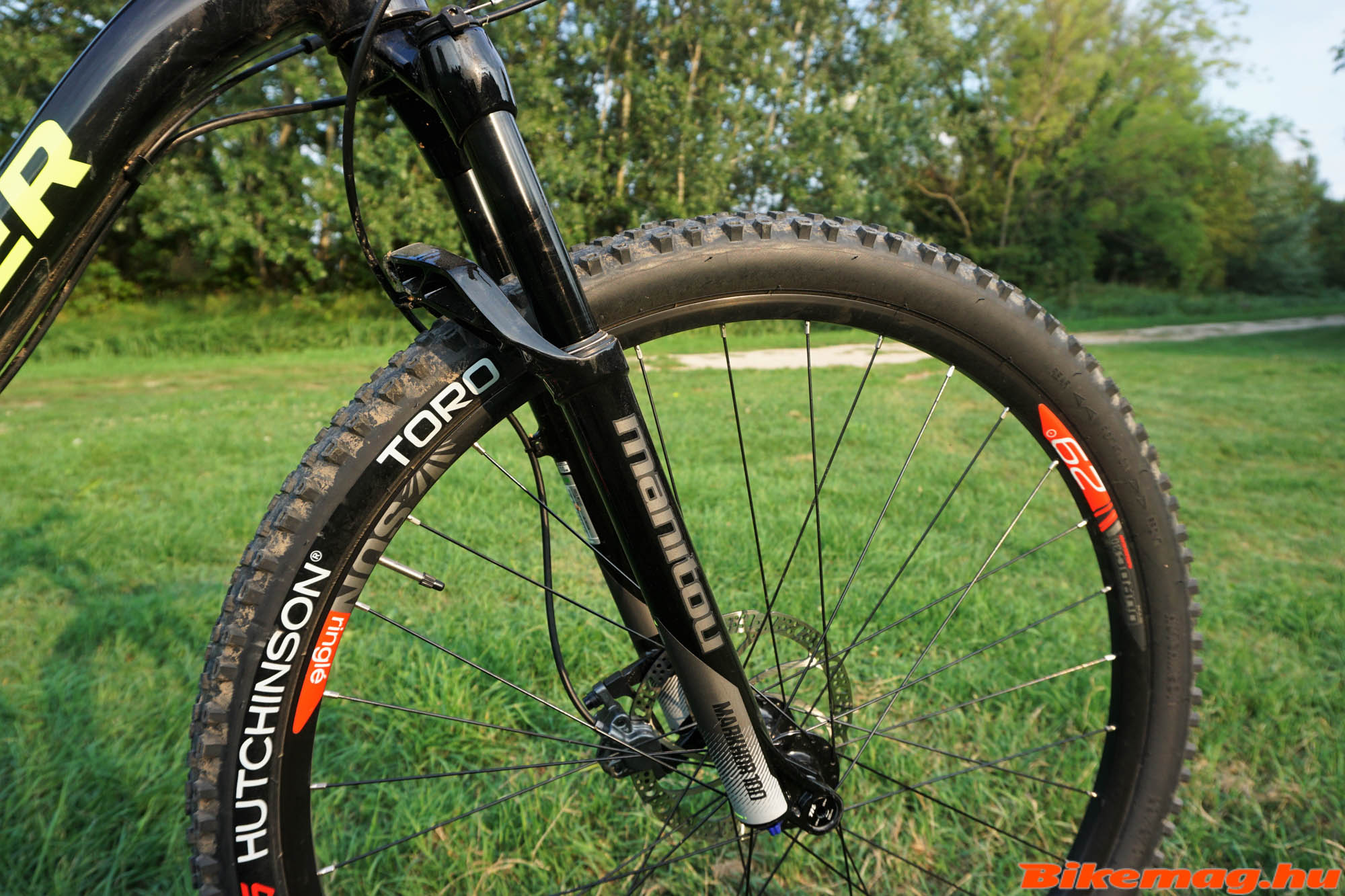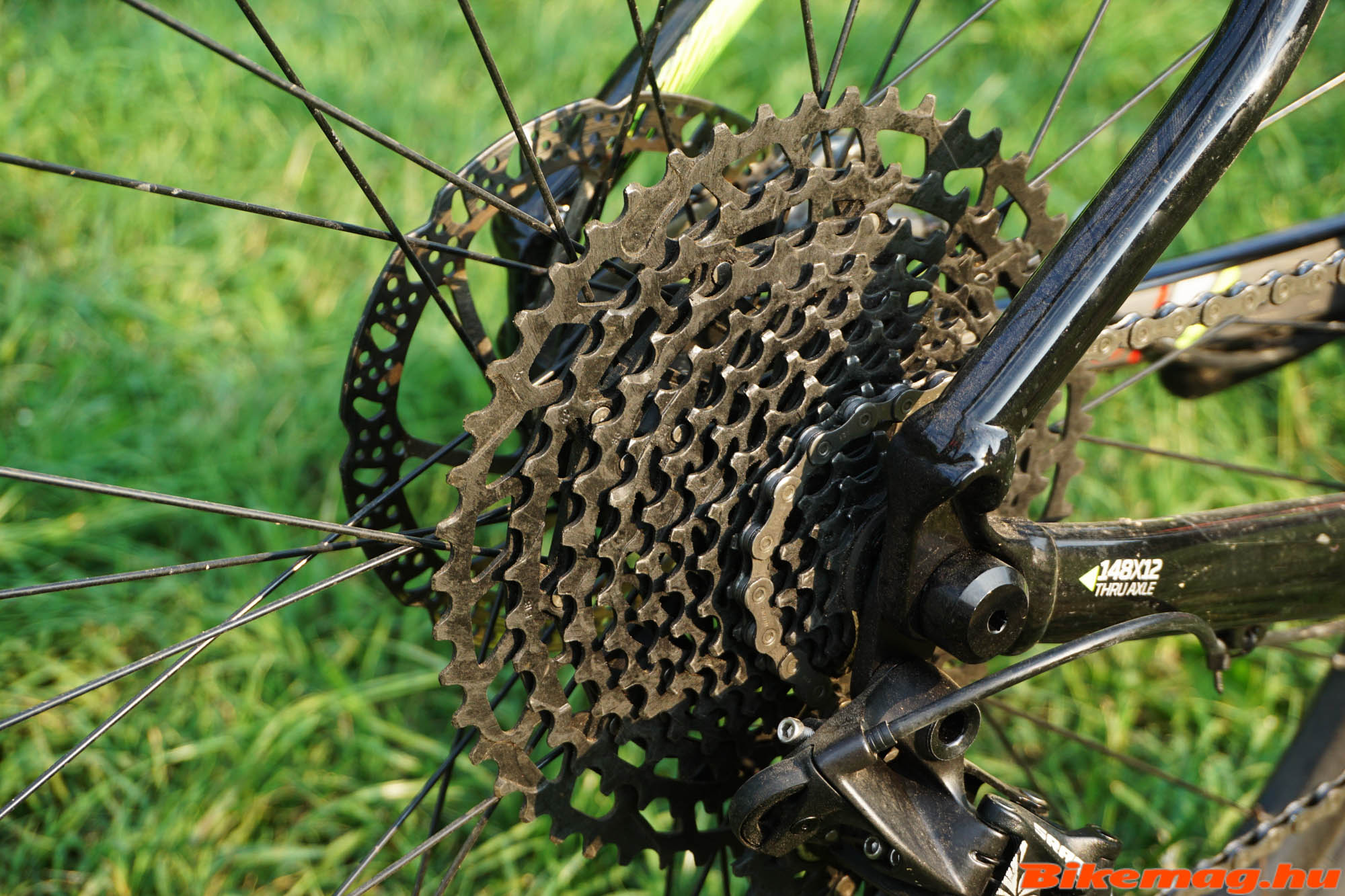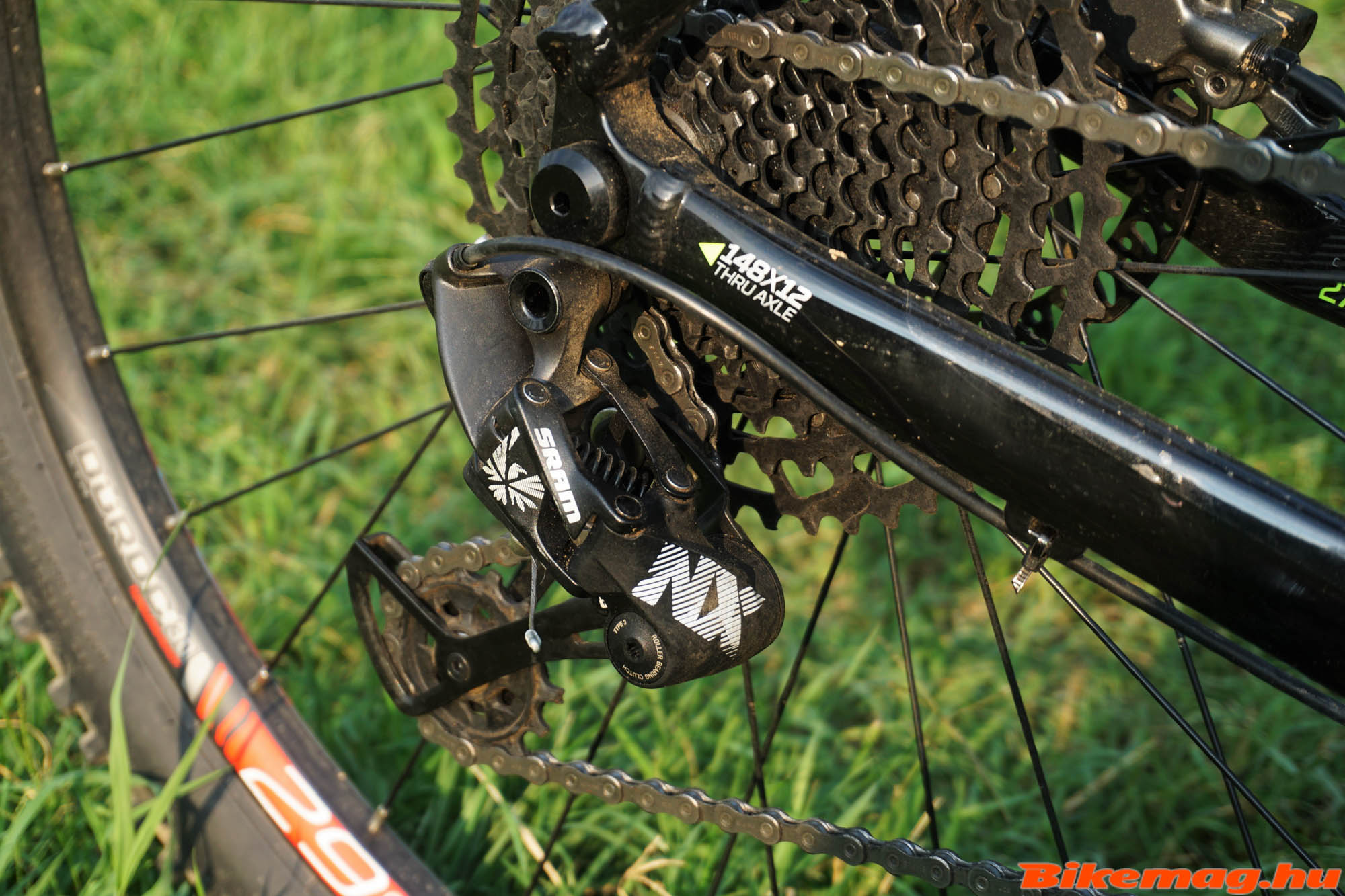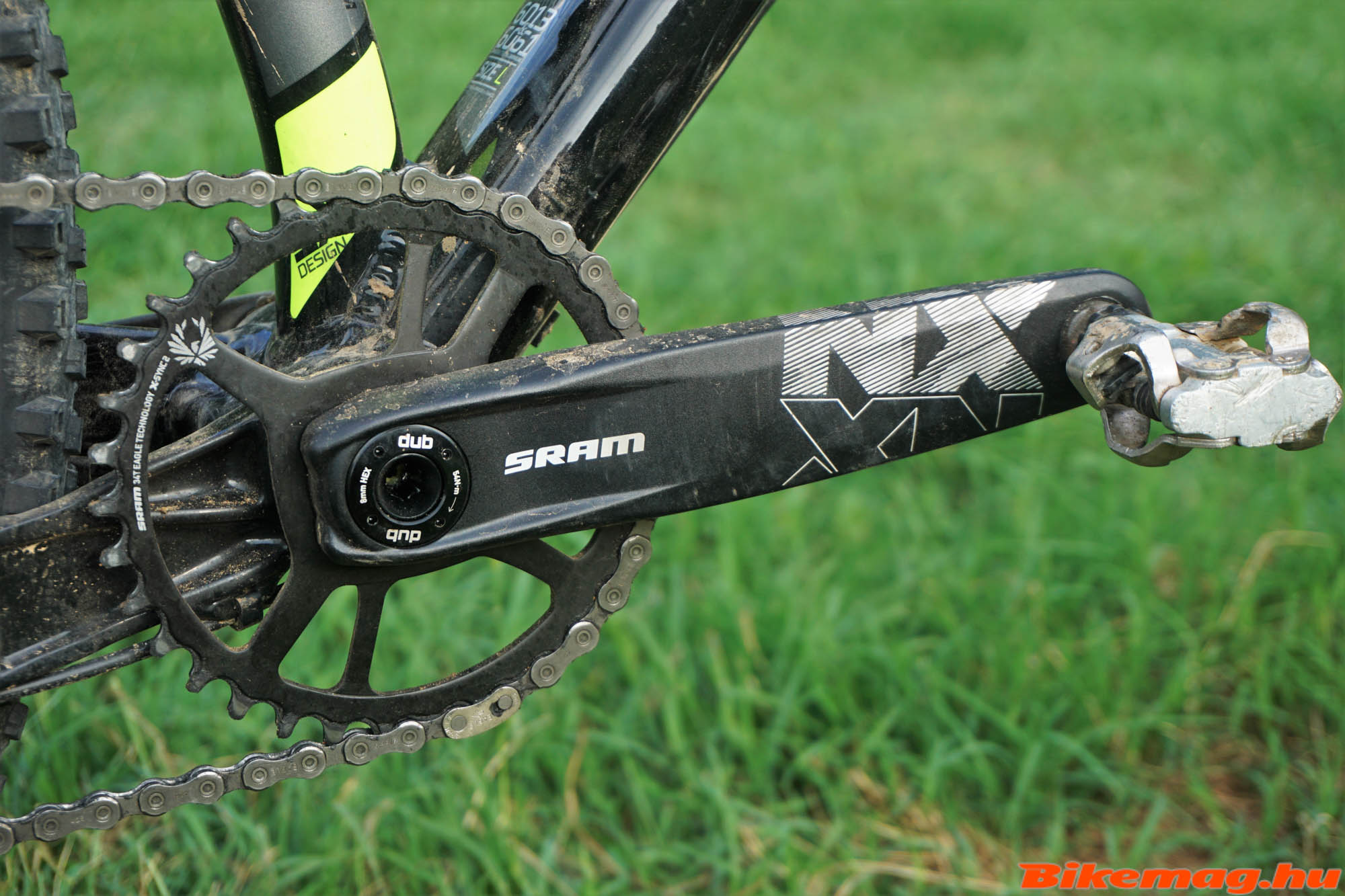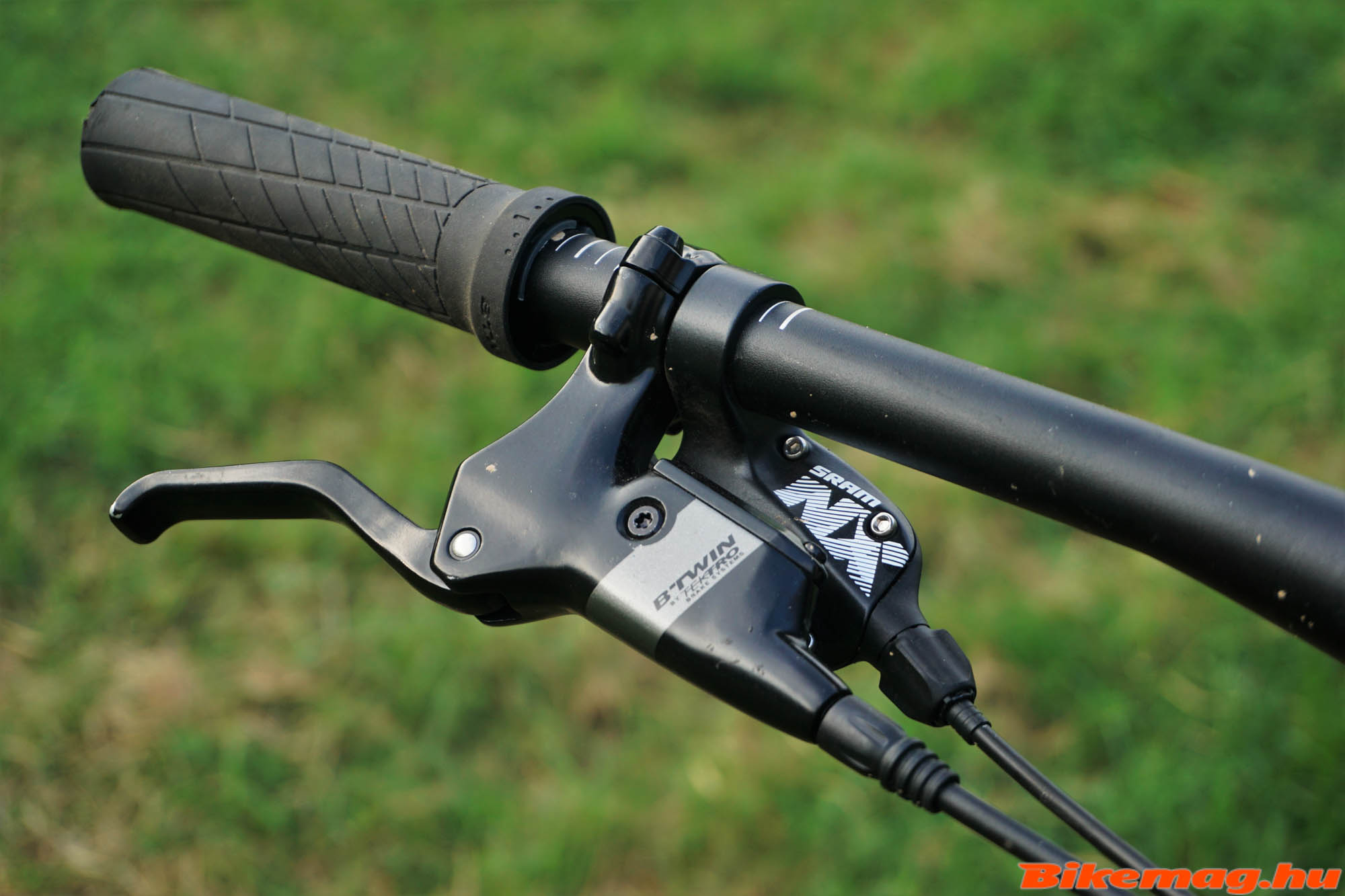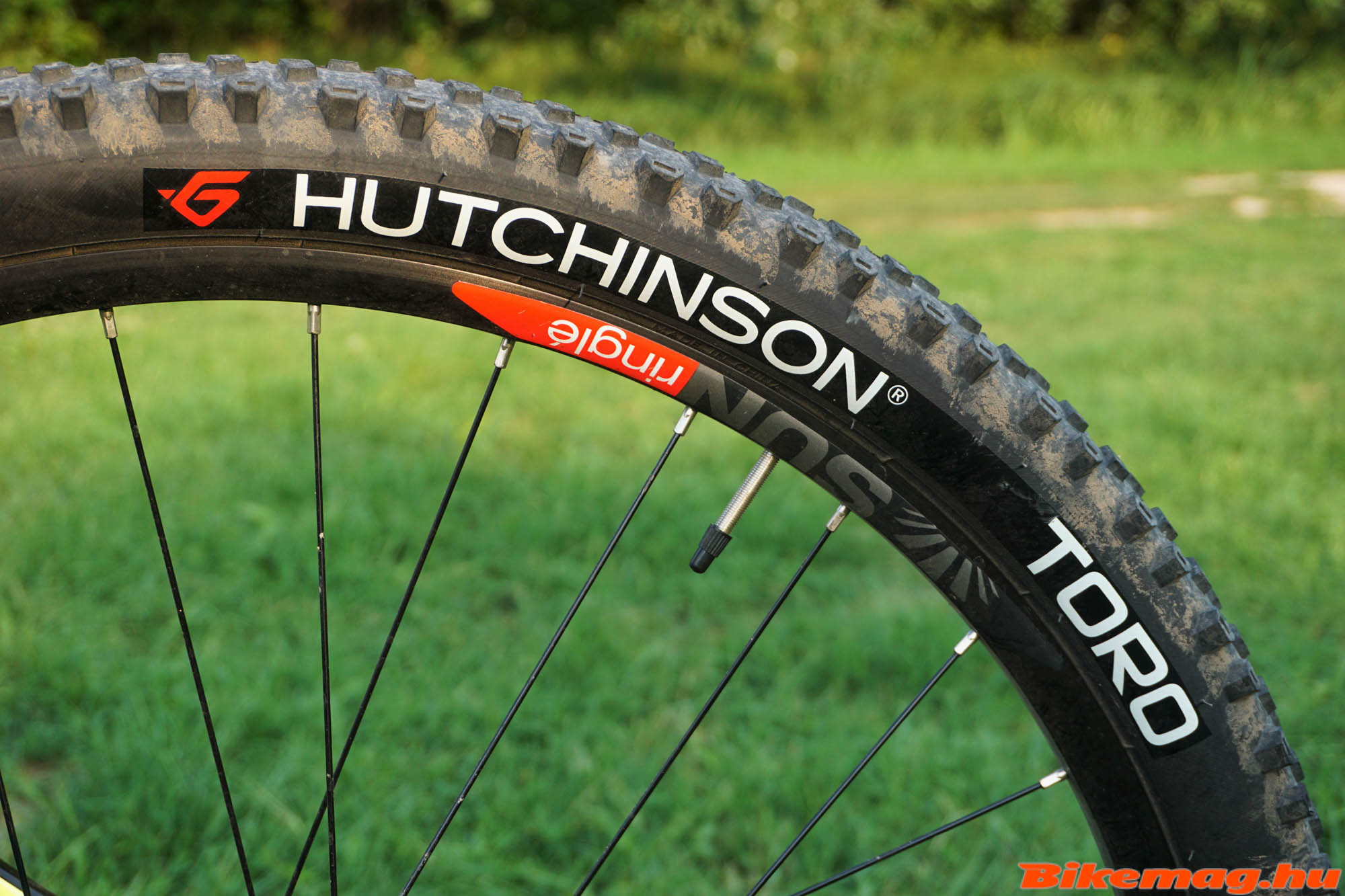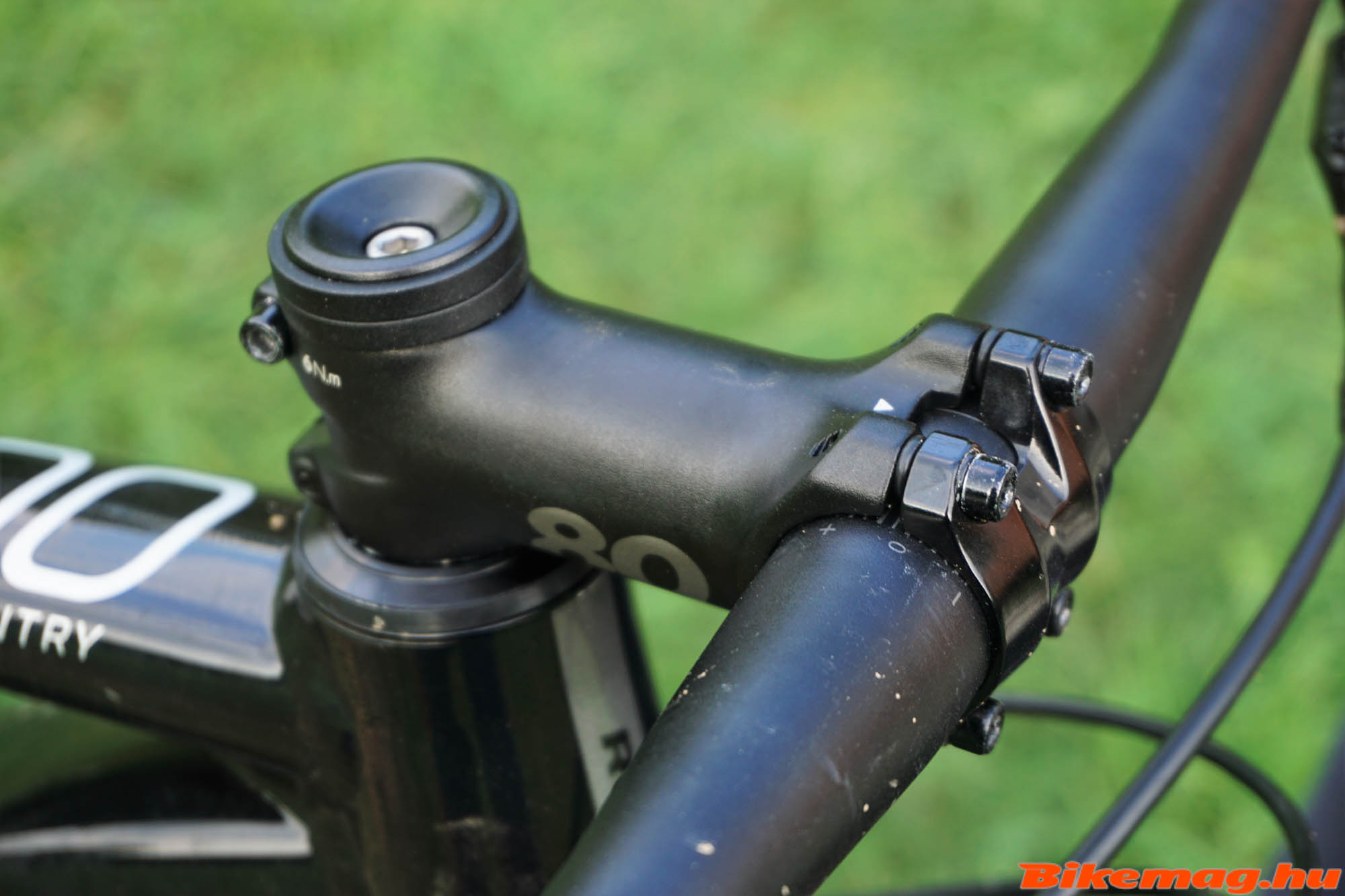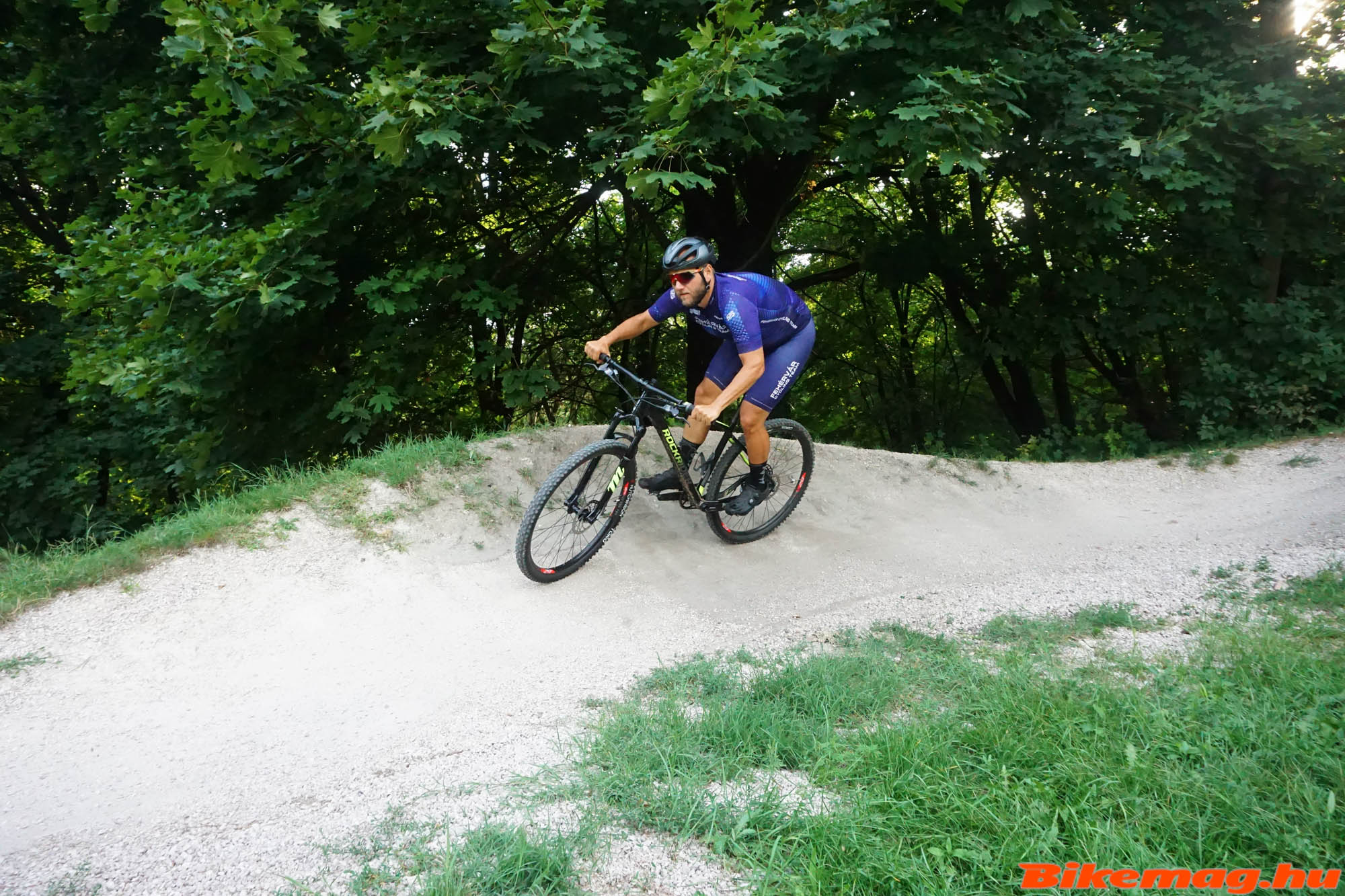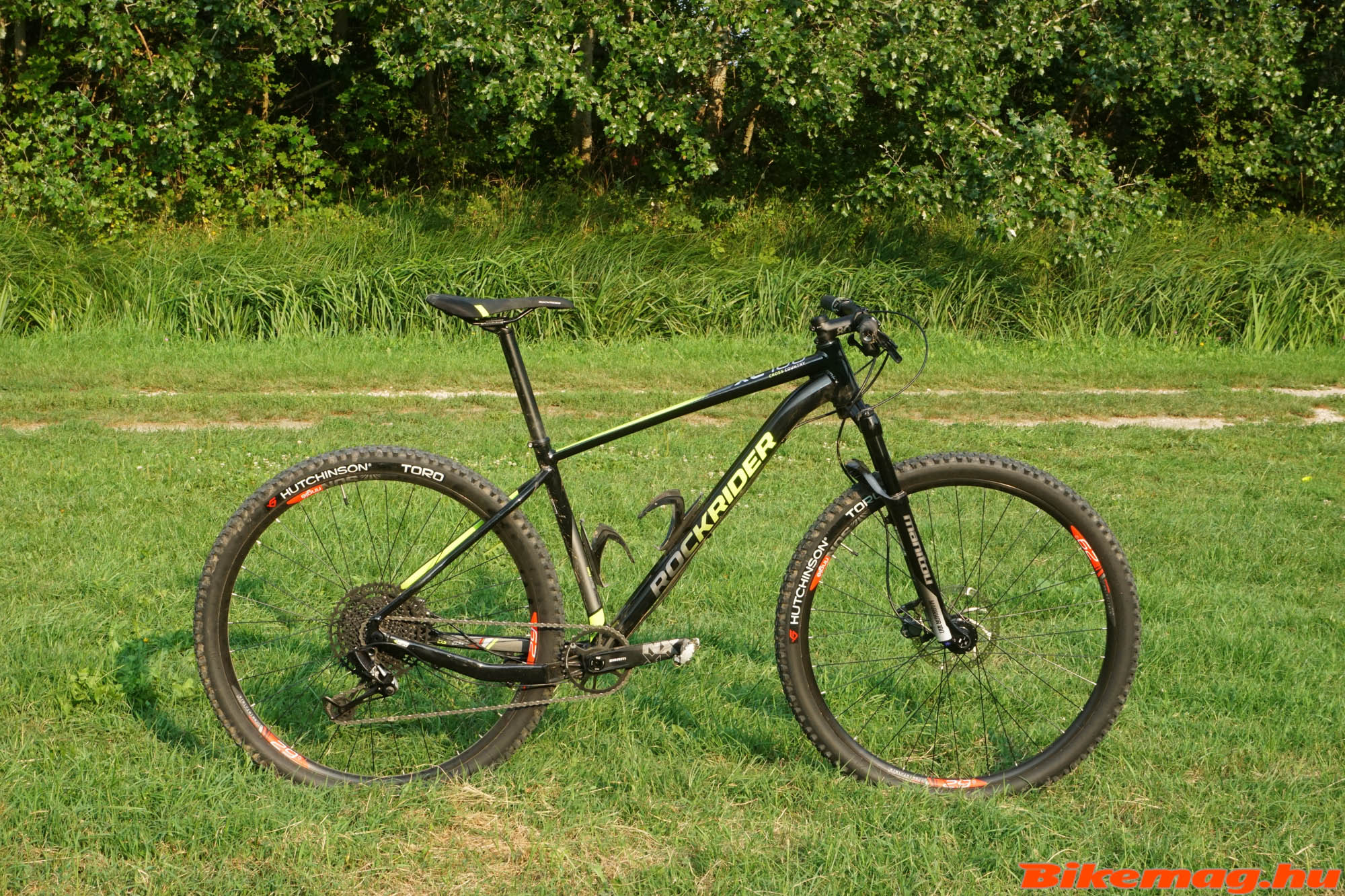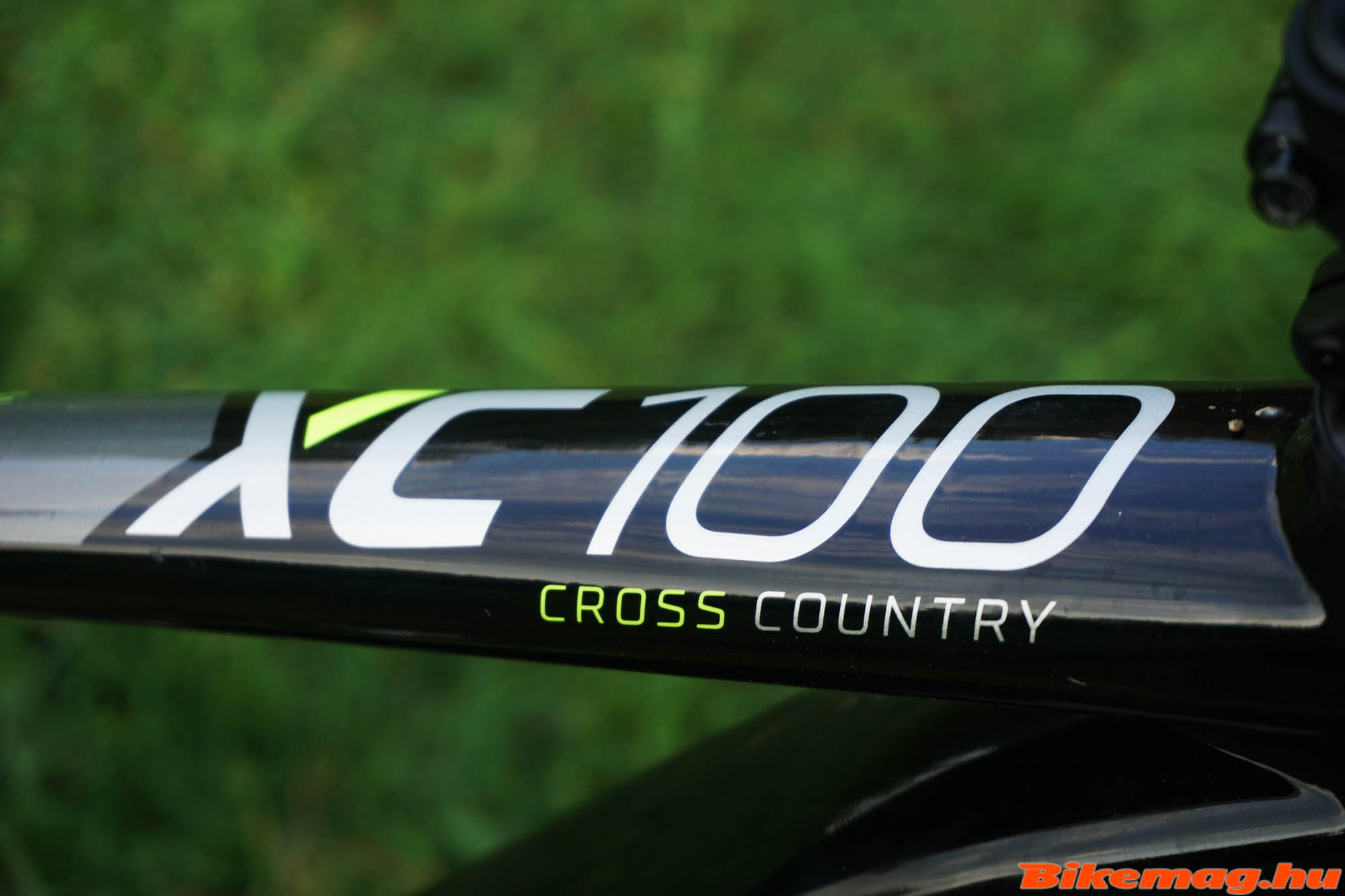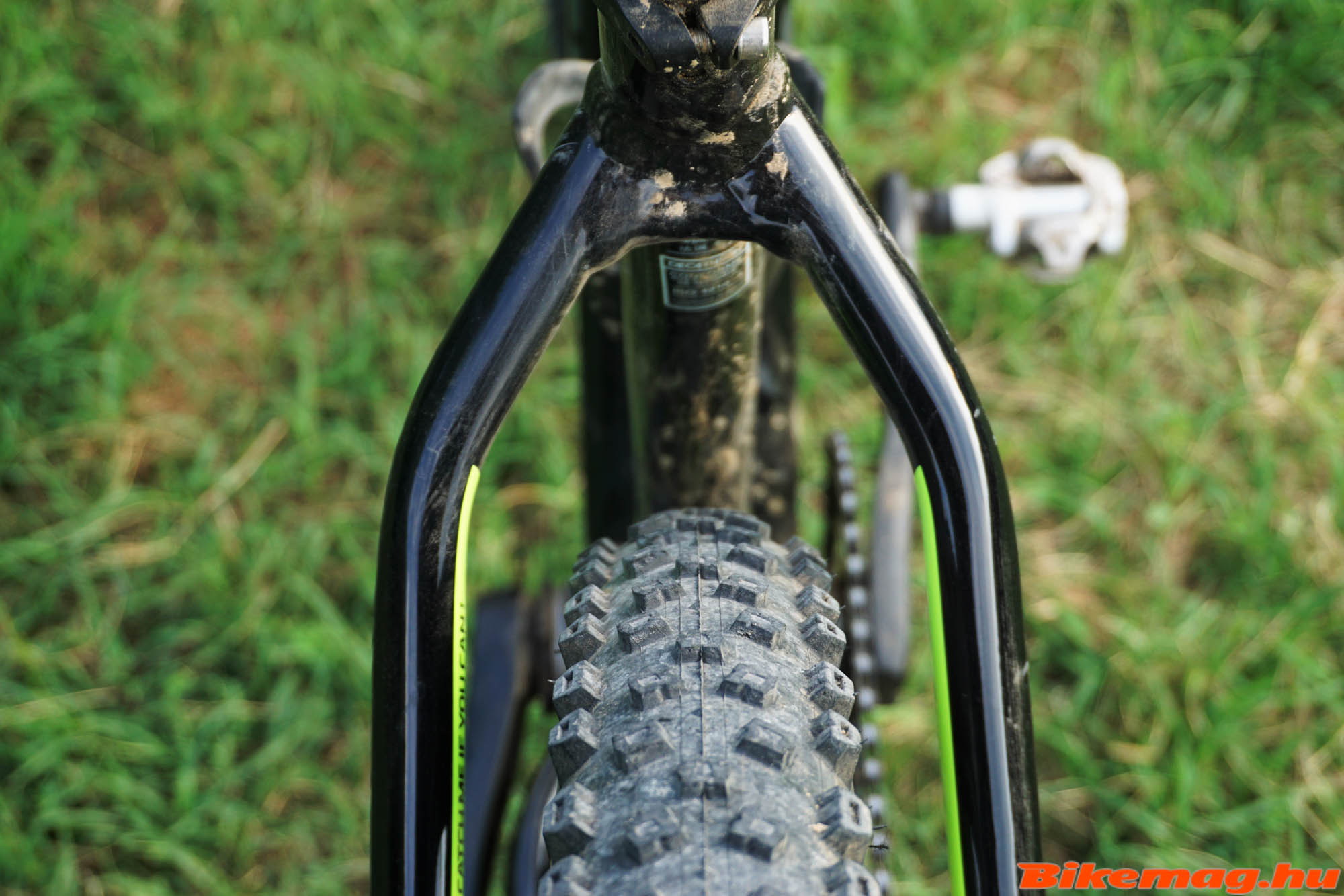The Rockrider a household brand at Decathlon. For many years the French sport emporia used this brand for all their MTB bikes, parts, accessories and clothing, and will continue to do so in the future despite the complete revamp of the Decathlon marque structure starting this year. We published an article describing the new branding strategy, and reported that each and every Decathlon brand – including the Rockrider range – will have a dedicated developing team. The bike in this review was designed previous to the changes, nevertheless XC 100 carries all the characteristics of the Rockrider concept, and offers a new take on versatility when it comes to wheel size.
Let’s cut to the chase of the matter of the Rockrider XC 100’s peculiar design concept! Decathon aimed to create a bike which is equally at home in amateur level XC racing and MTB touring, one that accepts all the presently popular MTB wheel sizes: 27,5″, 27,5″+ and 29″. Last but not least, the Rockrider XC 100 offers the exceptional value which consumers have to come to expect from the French sport giant. At this price we could justly envisage purchasing another wheelset with the bike, and use each for the type of riding we plan to go on. Hence this bike can be ridden on or off road, on various types of terrain, loaded with gear or in competition model. It’s an interesting concept, and was curious to learn if it proves to be a viable alternative to owning several bikes for the appropriate application. Our test model came with 29” wheels, but nothing could stop us from going one size down, or turning this into a “plus” size bike with burly wide rubber!
The soul of the Rockrider XC 100 is a frame constructed from 6013 and 6061 triple butted aluminum tubing which displayed on the logos decorating the frame. It accepts wheels with modern 148×12mm Thru-axle hubs thereby enhancing stiffness and stability. Furthermore, the frame was designed especially for single chainring drive systems which also demonstrates how up-to-date the design is. We also get asymmetric chain stays in order to increase tire clearance and improve rear end stiffness. The chain stay logos let us know that this bike is ready to accept virtually any current wheel type on the market.
The frame geometry closely follows current trends in mountain bike design. The top tube is quite long, the head tube angle is relatively slack for an XC bike, while the step over height is low even by modern standards. The latter entails that the potential buyer needs totest ride the bike to find the proper size, as the frame feels somewhat small for its sizing.
When it comes to suspension, the Decathlon team choose the Manitou Markhor 100 fork to smoothen the ride. It’s a 100mm travel air sprung design with hydraulic damping. There is a lockout lever on the handlebar to stop the unwanted movement when on smooth surfaces or climbing. Way back when I started mountain biking Manitou was one of the hottest brands on the market, later it faded somewhat, and up until the last few years not many bikes were equipped with this brand’s forks. So I was also curious about how this model performs and compares to the strong competition on the present MTB market.
The Rockrider XC 100 is equipped with a complete SRAM NX Eagle component set offering single chainring 1×12 speed shifting. A 34T direct mount chainring with a special tooth profile is paired with a 10-50T cluster at the back. The gearing range is truly astonishing, it has high enough gears for fast riding as well as mega-low gears for steep climbs. We tested several bikes equipped with the exact same setup, and were always satisfied with its performance, precision and reliability.
The brakes on the bikes are somewhat of a novelty – well at least for me. Tektro branded hydraulic disc systems are a rare sight on MTB bikes in Hungary, this model has a single piston design with PM mounting paired to conventional sized (180/160mm) rotors. The brake levers display a BTwin logo letting us know that it was specially made for the French sporting brand. Perhaps next year this will be changed to “Rockrider” to stay in line with the new consistent branding concept.
As mentioned earlier, the bike came with 29” wheels – damned good ones if you ask me! In this price category a pair of Sun Ringle Duroc 30 SRC seems extravagant, it’s usually seen on new bikes costing at least three times as much. They are tubeless ready, so if the Hutchinson Toro tires Decathlon chose for this set is substituted by a tubeless ready model, we may get rid of the inner tubes once and for all.
As we have come to expect, the rest of the accessories found on this Decathlon bikes are generally in-house parts. I’d like to highlight the saddle, which reveals a Selle Royal logo as well as the “Rockrider”, so it’s made in the same manufacturer who own and produces the famed Fizik saddles. The model bears a very close resemblance to my favorite saddle: we may as well say that it’s identical except for the logos.
Now let’s see how this interesting bike performs out on the trails!
First thing before the test ride was to set the saddle height and the suspension fork. The latter involved putting the right amount of air pressure into the chamber for my weight, and then setting rebound character to my preference. There is a rough guide to help with this, and I found that that I needed to turn the rebound to its maximum setting to get the necessary damping. This raises the question whether heavier riders would be able to achieve the required rebound adjustment. The jury is out on this, but I tend to prefer a higher setting than most so the range might be sufficient. If you are faced with a problem, the oil in the fork can also be substituted by a heavier viscosity thereby increasing the range of damping.
Once I got rolling, I immediately noticed the elevated bottom bracket and the ensuing relatively higher center of gravity. This impression can also be observed by looking at the frame geometry chart: the bottom bracket is indeed quite high for a 29er bike as the frame has to be able accommodate the smaller wheel size too. Technically a frame cannot handle both wheel sizes with the same ride character, so there needs to be some form of compromise when it comes the BB height. In the 29er setup the rider’s center of gravity is higher than usual, but it’s something I got used to as I rode the bike more and more. The 27+ wheels will also have the same handling, since the tire diameter is almost identical to narrower 29” ones.
Other than the high center of gravity, the Rockrider XC 100 handles like a modern XC rig. There is nothing to give away that it comes from a brand which doesn’t specialize designing and manufacturing bikes. So it’s certainly not department store “junk”, offering sufficient stability, thereby meriting confidence even on the steep downhills. In addition, it feels quite light and nimble on the climbs. This all should come as no surprise when we study the frame geometry figures. I presume that the Rockrider XC 100 will be able to stand its ground on most local trails, even enabling the rider to tackle MTB competitions.
When it comes to gear shifting, the SRAM NX is undoubtedly a reliable choice, so there is nothing to worry about. The brakes are more of a “dark horse” in this regard. The Tektros manage to stop the bike when needed, nevertheless one could feel that it’s not a premium product. On one hand they lack ultimate power, but moreover the modulation they offer is not up to the standards set by the well-known industry names. I would have preferred to see one of the entry-level Shimano models on this bikes, but I guess these Tektro disc brakes will do just fine for most riders.
On the other hand, the Manitou Markhor fork turned out to be a pleasant surprise. The action is certainly very sensitive – maybe too responsive to my taste -, so I tended to use the lockout function quite a lot on this bike. My only gripe is that I found the lockout lever on the handlebar to be less than ergonomic. Unfortunately it’s difficult to operate the control in full-finger gloves, and once turned there’s little feedback of its position. As I have learned during our Decathlon factory visit that the lever design will change for next year, it’ll be considerably wider, which is likely to solve the problems I encountered on this test bike. Interestingly, the new lever design is being developed in house. The attitude to continuous refinement is always present at the French sporting brand, and finding a solution to this fork lockout problem demonstrates how it’s done in practice.
Another feature of the bike that I appreciated was the saddle. Once I seat on it, I immediately knew that it’s actually my favorite saddle “in disguise”. Once I learned that this saddle model can be purchased separately at Decathlon, I bought one, since it costs much less than the Fizik model I have on my bikes. As much I relished the above-mentioned contact point, I came to dislike the handlebar grips on the Rockrider XC 100. They tend to place pressure on the wrong part of my palm, but I know it’s a personal matter. Others may have a completely different experience concerning both the grips and the saddle. The good thing is that these parts are relative inexpensive, and can easily be substituted even by the non-mechanically-inclined rider.
Another aspect of this bike that I would change are the tires. The Hutchinson Toro has an aggressive tread pattern which has its place in mountain biking, but perhaps not on an XC model aimed at less advanced riders. Also, I prefer to run my MTB wheels with a tubeless setup, and this tire model was not designed as such. Ditching the inner tubes would certainly raise the level of comfort as well decreasing rolling resistance, especially if a less aggressive tire tread is chosen. Maybe I’d keep the Hutchinson Toro tires for winter use, since this tread pattern may provide better grip in sloppy conditions, and for cold weather training speed is not a paramount concern.
All in all the Rockrider XC 100 undeniably offers excellent value for money, and for most local hobby MTB riders, the performance it delivers is more than enough. Moreover there is the choice of a wide variety wheel and tire sizes, enabling the rider to use the same bike for touring or amateur racing – in MTB marathons, 24-hour events or cross country. It’s not to say the bike is perfect. Its versatility entails a certain level of compromise in terms of handling, and certain equipment choices also leave something to be desired. On the other hand, the bike has no serious weakness which could severely compromise ride quality. It’s a sterling bike with up-to-date design.
In case you have higher expectations concerning the level of equipment, the same frameset could be purchased with better components and a more advanced front fork by opting for the Rockrider XC 500 model. Even not satisfied? You could then go for a carbon fiber frame in the high-end of the Rockrider range! Alternatively if the rather modest price tag on the XC 100 seems too high for the budget, there are less expensive builds as well, offering decent performance and great value. To see the whole Rockrider range, please visit the comprehensive and informative Decathlon website!
Recommended retail price: HUF 299,990.
More information can be found on the Decathlon website.

